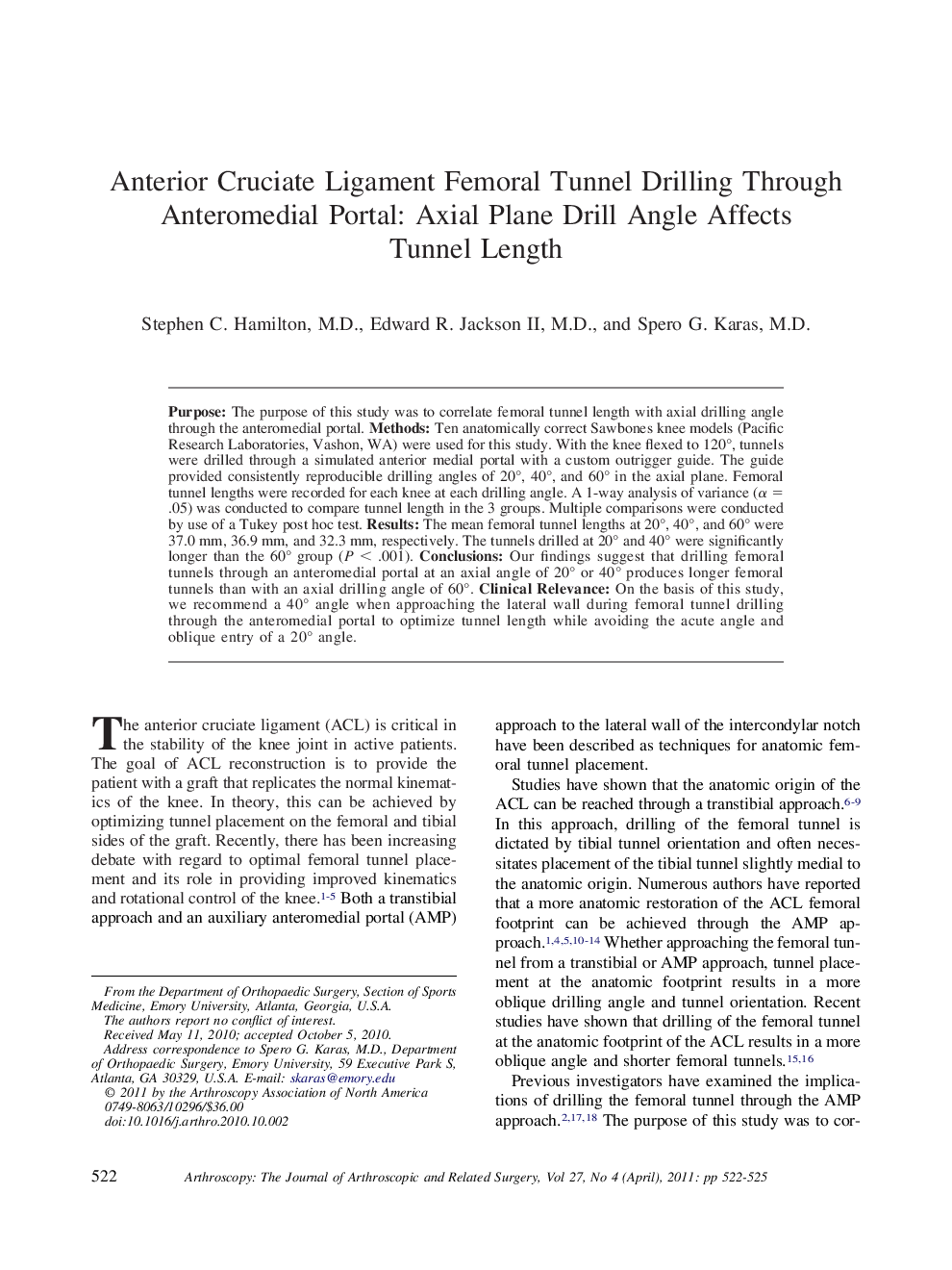| Article ID | Journal | Published Year | Pages | File Type |
|---|---|---|---|---|
| 4043791 | Arthroscopy: The Journal of Arthroscopic & Related Surgery | 2011 | 4 Pages |
PurposeThe purpose of this study was to correlate femoral tunnel length with axial drilling angle through the anteromedial portal.MethodsTen anatomically correct Sawbones knee models (Pacific Research Laboratories, Vashon, WA) were used for this study. With the knee flexed to 120°, tunnels were drilled through a simulated anterior medial portal with a custom outrigger guide. The guide provided consistently reproducible drilling angles of 20°, 40°, and 60° in the axial plane. Femoral tunnel lengths were recorded for each knee at each drilling angle. A 1-way analysis of variance (α = .05) was conducted to compare tunnel length in the 3 groups. Multiple comparisons were conducted by use of a Tukey post hoc test.ResultsThe mean femoral tunnel lengths at 20°, 40°, and 60° were 37.0 mm, 36.9 mm, and 32.3 mm, respectively. The tunnels drilled at 20° and 40° were significantly longer than the 60° group (P < .001).ConclusionsOur findings suggest that drilling femoral tunnels through an anteromedial portal at an axial angle of 20° or 40° produces longer femoral tunnels than with an axial drilling angle of 60°.Clinical RelevanceOn the basis of this study, we recommend a 40° angle when approaching the lateral wall during femoral tunnel drilling through the anteromedial portal to optimize tunnel length while avoiding the acute angle and oblique entry of a 20° angle.
